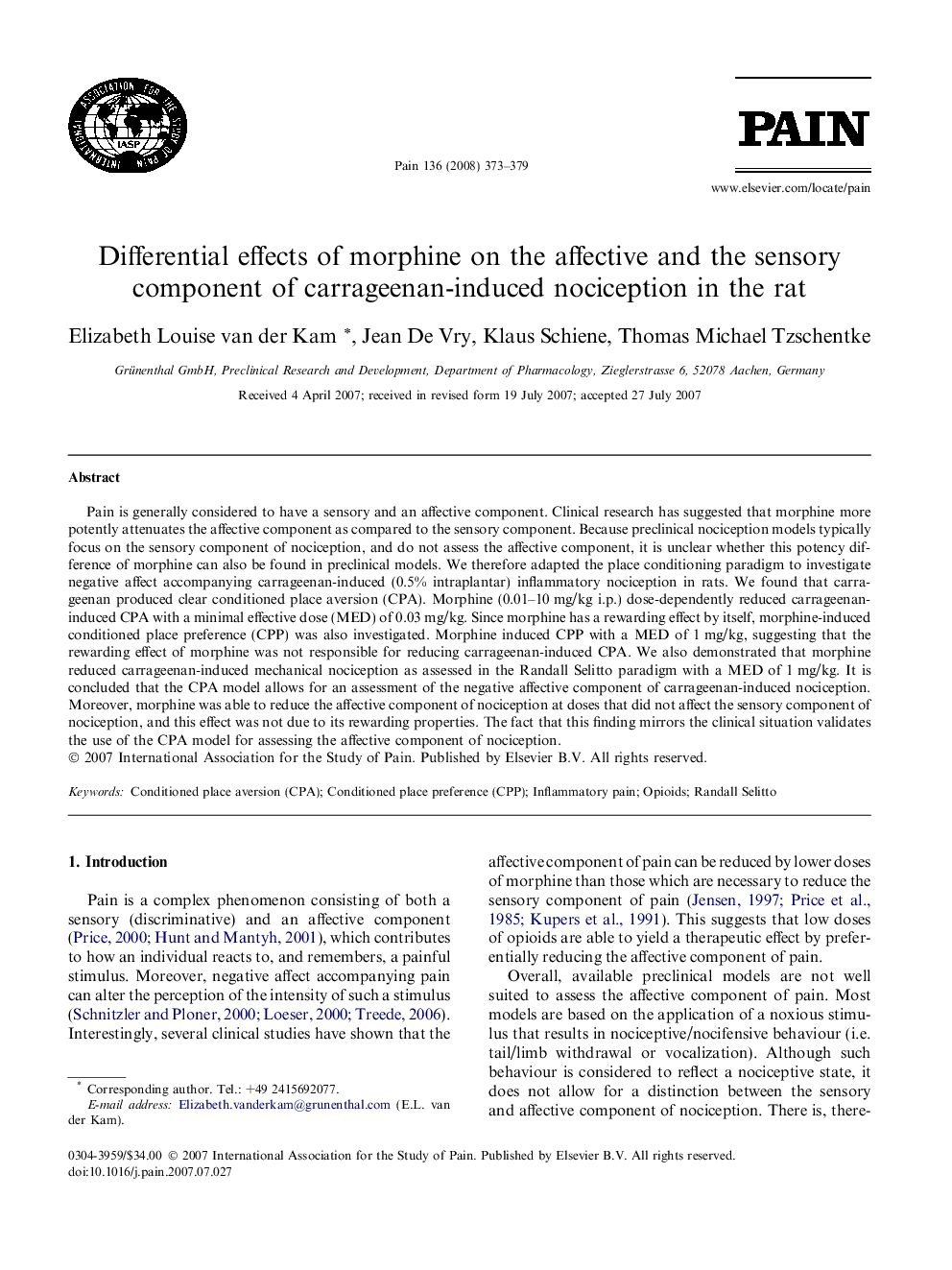| کد مقاله | کد نشریه | سال انتشار | مقاله انگلیسی | نسخه تمام متن |
|---|---|---|---|---|
| 915089 | 918430 | 2008 | 7 صفحه PDF | دانلود رایگان |

Pain is generally considered to have a sensory and an affective component. Clinical research has suggested that morphine more potently attenuates the affective component as compared to the sensory component. Because preclinical nociception models typically focus on the sensory component of nociception, and do not assess the affective component, it is unclear whether this potency difference of morphine can also be found in preclinical models. We therefore adapted the place conditioning paradigm to investigate negative affect accompanying carrageenan-induced (0.5% intraplantar) inflammatory nociception in rats. We found that carrageenan produced clear conditioned place aversion (CPA). Morphine (0.01–10 mg/kg i.p.) dose-dependently reduced carrageenan-induced CPA with a minimal effective dose (MED) of 0.03 mg/kg. Since morphine has a rewarding effect by itself, morphine-induced conditioned place preference (CPP) was also investigated. Morphine induced CPP with a MED of 1 mg/kg, suggesting that the rewarding effect of morphine was not responsible for reducing carrageenan-induced CPA. We also demonstrated that morphine reduced carrageenan-induced mechanical nociception as assessed in the Randall Selitto paradigm with a MED of 1 mg/kg. It is concluded that the CPA model allows for an assessment of the negative affective component of carrageenan-induced nociception. Moreover, morphine was able to reduce the affective component of nociception at doses that did not affect the sensory component of nociception, and this effect was not due to its rewarding properties. The fact that this finding mirrors the clinical situation validates the use of the CPA model for assessing the affective component of nociception.
Journal: PAIN - Volume 136, Issue 3, 15 June 2008, Pages 373–379